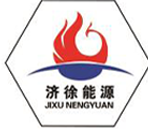
Nov . 09, 2024 19:14
Back to list
Regulating Valve Systems for Optimal Performance and Efficiency
Understanding the Function and Importance of Pressure Relief Valves
Pressure relief valves (PRVs) are essential components in a variety of industrial applications, ensuring safety and efficacy in processes that involve the handling of fluids and gases. These valves act as critical safety mechanisms designed to prevent excessive pressure buildup in systems, thus protecting equipment and personnel from potential hazards. This article explores the function, types, applications, and maintenance of pressure relief valves.
Function of Pressure Relief Valves
At its core, a pressure relief valve is an automatic device that releases pressure from a system when it exceeds a predetermined limit. The valve is designed to open and close according to the pressure in the system, allowing excess fluid or gas to escape, while maintaining stable operating conditions. This function not only protects equipment from damage but also prevents hazardous situations that could lead to explosions or leaks.
The operation of a PRV is based on the principles of fluid dynamics and pressure differentials. When the pressure in the system exceeds the valve’s set point, it activates, opening the valve's outlet. This release of pressure continues until the pressure drops to a safe level, at which point the valve closes again. This automatic response is vital in maintaining the integrity of systems that operate under varying pressure conditions.
Types of Pressure Relief Valves
There are several types of pressure relief valves, and the choice of valve often depends on the specific application and the properties of the fluid or gas being managed. The two primary types are
1. Spring-loaded relief valves These are among the most common types used in various industries. They consist of a spring mechanism that holds the valve closed until the pressure exceeds the set limit, at which point the spring compresses and allows the valve to open.
.
Applications of Pressure Relief Valves
صمام تنظيم

Pressure relief valves are used across many industries, including
- Chemical Processing In chemical plants, PRVs are critical for preventing pressure buildup in reactors and pressure vessels, thereby ensuring safe operations.
- Oil and Gas In the oil and gas sector, these valves prevent overpressure situations in pipelines and storage tanks, mitigating the risk of spills and explosions.
- Heating Systems In boilers and heating systems, PRVs maintain safe pressure levels to prevent overheating and potential failures.
- Water Systems Municipal water systems utilize PRVs to regulate water pressure, ensuring that pipes do not burst due to excessive pressure.
Importance of Maintenance
To ensure the proper functioning of pressure relief valves, regular maintenance and testing are crucial. Routine inspections can identify wear and tear or any potential malfunctions. Inchanging conditions within a system, the set pressure of PRVs may need to be adjusted.
Neglecting maintenance can lead to catastrophic failures, including equipment damage, environmental hazards, and severe safety risks. Therefore, industries must adhere to best practices for the installation, testing, and maintenance of pressure relief valves. This includes following manufacturer specifications and current regulatory standards.
Conclusion
Pressure relief valves are fundamental devices that play a significant role in maintaining the safety and reliability of various industrial processes. By regulating and controlling pressure levels, these valves protect equipment, ensure operational efficiency, and safeguard personnel from dangerous situations. Understanding the function, types, applications, and maintenance of pressure relief valves is essential for anyone involved in managing systems where pressure control is critical. In an era where safety and environmental regulations are increasingly stringent, investing in quality PRVs and their maintenance is not just a requirement—it’s a responsibility.
Latest news
-
Safety Valve Spring-Loaded Design Overpressure ProtectionNewsJul.25,2025
-
Precision Voltage Regulator AC5 Accuracy Grade PerformanceNewsJul.25,2025
-
Natural Gas Pressure Regulating Skid Industrial Pipeline ApplicationsNewsJul.25,2025
-
Natural Gas Filter Stainless Steel Mesh Element DesignNewsJul.25,2025
-
Gas Pressure Regulator Valve Direct-Acting Spring-Loaded DesignNewsJul.25,2025
-
Decompression Equipment Multi-Stage Heat Exchange System DesignNewsJul.25,2025

